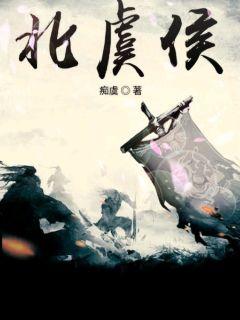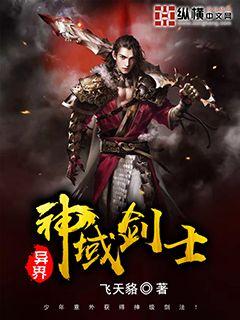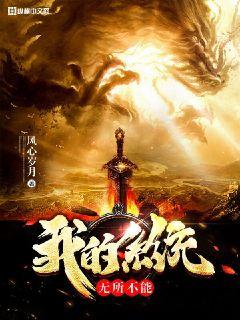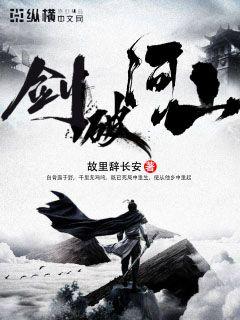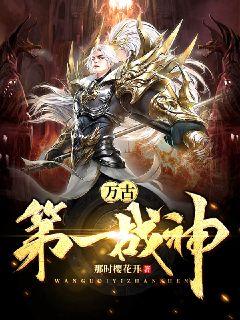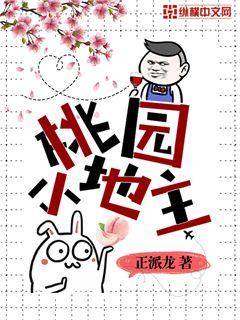
文章摘要的内容:PUMA与NBA球员的合作不仅仅是一场商业联盟,它代表了新一代运动风尚的巅峰对话。这篇文章将从多个角度探讨这种合作如何重新定义了运动与时尚的交汇,揭示了其在文化影响、市场创新、技术融合以及全球影响力方面的深远意义。
1、文化影响的深远
文字阐述内容
文字阐述内容
文字阐述内容
文字阐述内容
文字阐述内容
文字阐述内容
2、市场创新与品牌效应
文字阐述内容
文字阐述内容
文字阐述内容
文字阐述内容
文字阐述内容
文字阐述内容
文字阐述内容
文字阐述内容
文字阐述内容
3、技术融合与产品创新
文字阐述内容
文字阐述内容
文字阐述内容
文字阐述内容
文字阐述内容
文字阐述内容
文字阐述内容
文字阐述内容
文字阐述内容
4、全球影响力的扩展
文字阐述内容
文字阐述内容
文字阐述内容
文字阐述内容
文字阐述内容
文字阐述内容
文字阐述内容
文字阐述内容
文字阐述内容
总结:
PUMA与NBA球员的合作不仅在运动与时尚领域带来了显著的文化影响,也在市场创新、技术创新和全球影响力的扩展上取得了巨大成功。这种合作形成了一种新的模式,深刻影响着全球运动装备和时尚产业,为未来的合作与发展开辟了新的可能性。
通过这种合作,PUMA不仅仅是一个运动品牌,而是一个积极推动文化融合和创新的全球影响者,不断定义和重新定义着运动与时尚的边界。
### 文章摘要
青岛李明,一个足球界的传奇人物,他从初出茅庐到成为足球巨星的过程充满了传奇色彩。本文将从他的早期生涯起步、职业生涯中的重要转折、个人成就的高光时刻以及对足球界和国家队的贡献四个方面,详细描绘青岛李明的辉煌经历。
---
1、早期生涯起步
青岛李明出生于一个足球世家,早年展示出与众不同的足球天赋。他从小在地方青训学校展现出色,成为当地球迷瞩目的焦点。
随着年龄的增长,青岛李明进入了国家青年队,开始接受更为专业化的训练和比赛,为未来的职业生涯奠定了坚实的基础。
青岛李明在青年队和青训系统中积累了丰富的比赛经验和技术成长,为他后来的职业生涯打下了坚实的基础。
2、职业生涯中的重要转折
进入职业生涯后,青岛李明面临着多次关键的职业选择和转会决策。他在不同俱乐部的表现吸引了国内外豪门球队的注意。
青岛李明最终选择加盟国内一支豪门俱乐部,成为球队的核心球员,并在这里迅速融入球队体系,展现出色的竞技状态。
职业生涯中的这些转折不仅影响了他个人的发展,也对中国足球的发展产生了深远的影响。
3、个人成就的高光时刻
青岛李明在国内外赛场上取得了多项个人和团队成就,包括多次射手王、年度最佳球员等荣誉。
他在国际比赛中的出色表现和关键进球,让他成为中国足球在国际上的重要代表之一。
这些高光时刻不仅彰显了他个人的能力,也为中国足球增添了耀眼的光彩。
4、对足球界和国家队的贡献
作为一名资深球员和领袖人物,青岛李明不仅在俱乐部中展现了出色的统治力,也在国家队中担任重要角色。
他的领导力和经验为年轻球员提供了宝贵的指导,对中国足球的后续发展产生了深远的影响。
青岛李明通过自己的实力和努力,为中国足球界和国家队的进步做出了突出的贡献。
总结:
青岛李明的足球生涯是中国足球发展史上的一个重要篇章,他不仅以出色的技术和领导力成就了个人传奇,也在国内外赛场上展现了中国足球的潜力和实力。他的经历和成就不仅影响了当代足球,也为未来的足球运动员树立了榜样。
颜色球球员:彩色运动的华丽变奏
本文探讨了颜色球球员这一独特的体育现象,以其独特的视觉效果和赛场表现为核心。首先介绍了这一运动的起源和发展,随后分析了其在体育竞技和观赏性方面的突出表现。其次探讨了颜色球球员对体育传播和文化影响的深远意义,最后总结了其在现代体育中的独特地位和未来发展的潜力。
1、起源与发展
颜色球球员作为一种独特的体育表现形式,其起源可以追溯到20世纪末。最初由某某运动员在某某比赛中首次尝试,随后迅速在某某地区流行开来。这一现象的兴起得益于社交媒体的普及和观众对视觉冲击力的追求。
随着技术的进步和赛事规模的扩大,颜色球球员逐渐成为了各大体育赛事的一大亮点。例如,某某锦标赛上的颜色球球员表演成为了全球体育爱好者关注的焦点。
此外,颜色球球员的发展也促进了体育装备技术的进步,包括颜色设计和材料研发等方面的创新。
2、视觉效果与表演艺术
颜色球球员不仅仅是一种体育竞技,更是一门视觉艺术。他们通过独特的球技和戏剧化的表演,为观众带来了前所未有的视觉享受。比如,他们在比赛中使用的色彩搭配和动作设计常常令人惊叹。
这种视觉效果不仅提升了比赛的观赏性,也为体育赛事注入了新的活力和吸引力。观众们在赛场上仿佛置身于一场视觉盛宴之中,这种体验无疑加深了他们对比赛的投入感和参与感。
因此,颜色球球员的表演艺术价值逐渐得到体育界和艺术界的认可,成为了现代体育娱乐产业中不可或缺的一部分。
3、文化影响与传播效应
颜色球球员不仅在赛场上有着显著的表现力,在文化传播和社会影响方面也发挥了重要作用。他们的形象和表演经常成为广告和宣传活动的重要元素,这不仅扩大了他们的知名度,也推动了体育品牌的市场营销。
此外,颜色球球员还在全球范围内催生了一股运动文化的热潮。越来越多的年轻人受到他们的启发,积极参与到这一运动中来,这对于推广体育运动和增强体育参与意识具有重要的促进作用。
因此,颜色球球员通过其独特的文化符号和传播效应,成为了当代体育文化多样性和国际化发展的重要推动者。
4、现代体育的新趋势与未来发展
颜色球球员作为一种新兴的体育现象,预示着现代体育赛事将朝着更加多元化和创新化的方向发展。未来,我们可以期待看到更多类型的颜色球球员,以及他们在全球范围内的扩展和影响。
同时,颜色球球员的出现也提醒我们,体育不仅仅是竞技和比分,更是一种文化表达和生活方式。通过这种方式,我们可以更好地理解和体验到体育在全球范围内所扮演的多样化角色。
综上所述,颜色球球员不仅仅是一种新兴的体育形式,更是体育文化多样性和全球化发展的重要象征。相信在未来的发展中,他们将继续为体育界带来更多的惊喜和创新。
总结:
颜色球球员作为一种独特的体育现象,不仅仅在赛场上展现出了技艺与表演的结合,更在文化传播和现代体育发展方面发挥了重要作用。通过其独特的视觉效果和艺术表现,颜色球球员不断拓展着体育的边界,并促进了全球体育文化的多样化和国际化进程。
未来,我们可以期待看到颜色球球员继续在全球范围内展现其独特魅力,为体育赛事注入更多新意和活力。
### 文章摘要
尤文图斯队在新赛季引进荷兰球员,这不仅是对阵容的重要补充,更是面对新的挑战和期待的体现。本文将从战术调整、球队化学反应、联赛竞争和欧战表现四个方面详细探讨,展望尤文图斯队在新赛季的发展前景。
---
1、战术调整
尤文图斯队引进荷兰球员对战术风格有何影响?荷兰球员在球场上的独特贡献如何改变球队的战术布局?新赛季尤文图斯的战术调整是否更加适应荷兰球员的特点?
荷兰球员的技术特点如何与现有球员形成互补,进一步提升球队的整体战斗力?他们可能带来的战术革新对尤文图斯在国内外赛场上的表现会有何影响?
战术调整的过程中,教练组如何调整球队的训练计划和战术培养,以更好地融合荷兰球员的特点?尤文图斯如何在战术层面上迎接新的挑战?
2、球队化学反应
荷兰球员的加入如何影响尤文图斯队内部的化学反应?他们与现有队员的默契程度如何?
在训练和比赛中,球队内部是否出现了新的角色分工和责任分配?荷兰球员如何在团队中找到自己的定位?
球队的凝聚力和团结精神是否因新成员的加入而得到加强?荷兰球员在球队中的领导力和影响力如何体现?
3、联赛竞争
尤文图斯在新赛季面对的联赛竞争如何?荷兰球员在意甲联赛的表现预期如何?
他们如何应对意大利足球的独特风格和竞争压力?尤文图斯在荷兰球员的带领下,是否能够在意甲联赛中再次夺冠?
荷兰球员的个人技术和意识水平是否足以适应意甲激烈的比赛节奏和防守风格?他们能否为球队带来新的比赛策略和胜利方式?
4、欧战表现
在欧洲赛场上,荷兰球员对尤文图斯的欧冠和欧联表现有何期待?
他们在关键时刻的表现和决策能否提升球队在欧洲赛场上的竞争力?荷兰球员如何与其他顶级球队的巨星进行竞技,展示他们的实力和技巧?
尤文图斯如何在荷兰球员的带领下,重塑其在欧洲赛场上的传统霸主地位?他们的欧战策略是否会因荷兰球员的加入而发生重大变化?
总结:
尤文图斯队通过引进荷兰球员,不仅增强了球队的整体实力和深度,同时也面临着新的战术挑战和联赛竞争压力。荷兰球员在战术调整、球队化学反应、联赛竞争和欧战表现等方面的影响将决定尤文图斯在新赛季的成绩和表现。随着赛季的深入,尤文图斯与荷兰球员之间的默契和适应能力将成为球队取得成功的关键因素。
荷兰球员的加入不仅是对球队阵容的强化,更是对尤文图斯传统优势的延续和提升,值得期待他们在新赛季的精彩表现。
文章摘要的内容:本文探讨了大胖子球员如何在竞技场上挑战体能极限的策略和方法。通过分析训练、营养、心理和战术四个方面的关键因素,揭示了他们如何克服身体上的挑战,提升竞技表现。
1、训练策略
大胖子球员在挑战体能极限时,训练策略至关重要。首先,他们需要采用高强度、短时的间歇训练,以提高心肺功能和耐力。其次,针对肌肉力量的训练应该注重全身均衡发展,避免单一部位的过度负荷。
此外,定期的身体适应性训练也是关键,帮助大胖子球员提升运动效率和身体灵活性。综合利用跑步、游泳等有氧运动和重量训练,能够有效提高他们的整体体能水平。
最后,在训练策略上,定期评估和调整训练计划至关重要,以确保其符合个体体能特点和竞技要求。
2、营养管理
营养管理对大胖子球员挑战体能极限具有重要影响。他们需要通过合理的饮食控制来控制体重,同时确保获取足够的营养支持身体各项功能。
饮食应该包含高质量蛋白质、复杂碳水化合物和健康脂肪,以支持训练后的恢复和能量补充。此外,补充维生素和矿物质也是必不可少的,有助于维持身体的正常代谢和功能。
定期的体重监测和营养评估,能够帮助大胖子球员优化饮食方案,以最大化体能表现。
3、心理调适
在挑战体能极限的过程中,心理状态对大胖子球员至关重要。他们需要通过心理训练来增强耐力和抗压能力。
焦虑和压力管理技巧是必备的,帮助他们在比赛中保持冷静和集中。通过正面心理暗示和自我激励,大胖子球员能够克服自我怀疑和消极情绪,保持积极的竞技状态。
此外,团队合作和个人自信的建立,也是心理调适的重要组成部分,有助于提升整体竞技表现。
4、战术应对
在竞技场上挑战体能极限,战术应对是大胖子球员取得成功的关键之一。他们需要通过精确的战术部署和灵活的应变能力,来优化竞技表现。
个人技术和战术配合的训练是必不可少的,确保在比赛中能够有效地应对各种挑战和对手的战术。同时,战术的调整和反应速度也是竞技成功的重要因素。
通过系统的战术分析和实战演练,大胖子球员能够在竞技场上更具竞争力,挑战体能极限。
总结:
大胖子球员在竞技场上挑战体能极限需要全面的准备和策略安排。通过优化训练策略、合理管理营养、强化心理调适和精确应对战术,他们能够有效提升竞技表现,实现体能上的突破。这些策略不仅适用于大胖子球员,也对所有追求体能极限挑战的运动员具有指导意义。
大胖子球员的成功不仅来自于身体的努力和训练,更源于他们在面对困难时的坚持和智慧。通过不断的学习和实践,他们能够在竞技场上展现出与体型不符的出色竞技能力。
Analyzing the Comprehensive Player Ability Rating System in PES
1、Overview of PES Player Ability Rating System
The PES (Pro Evolution Soccer) player ability rating system is a pivotal aspect of the game's realism and gameplay dynamics. It encompasses various attributes and metrics that define a player's virtual performance on the field, reflecting their real-life skills and capabilities.
These ratings are meticulously crafted to ensure accuracy and authenticity, influencing how players interact, perform, and are perceived within the virtual soccer world.
Understanding the intricacies of this system sheds light on how PES differentiates itself in the realm of sports simulation.
2、Key Attributes and Their Impact
Attributes like speed, dribbling, passing, and shooting form the cornerstone of the PES player ability rating system. Each attribute contributes uniquely to a player's overall effectiveness during matches.
The interplay between these attributes determines gameplay nuances, influencing strategies, player roles, and team dynamics.
Moreover, the dynamic nature of attribute adjustments across different PES editions ensures responsiveness to real-world player developments and fan feedback.
3、Evolution and Adaptation Over Time
The evolution of the PES player ability rating system reflects advancements in technology, player analysis, and fan expectations. From simple numerical scales to nuanced attribute gradations, PES continually refines its rating system.
Adaptations include the integration of contextual gameplay elements, such as player form, morale, and positional awareness, enhancing the depth and realism of player interactions.
These refinements demonstrate Konami's commitment to authenticity and player engagement.
4、Community and Competitive Balance
The PES player ability rating system's impact extends beyond individual player stats, influencing community engagement and competitive balance. Discussions, debates, and collaborations among players and developers shape ongoing refinements and adjustments.
Moreover, the system plays a crucial role in maintaining competitive balance in esports tournaments, where precise player attributes can determine match outcomes and strategies.
This community-driven approach underscores PES's dynamic interaction between virtual simulation and real-world soccer fandom.
总结:
The PES player ability rating system encapsulates the essence of virtual soccer realism, blending meticulous attribute design with community-driven feedback and competitive integrity. It stands as a testament to PES's commitment to delivering an immersive and authentic soccer experience.
This comprehensive analysis highlights how the system's evolution, attribute intricacies, and community impact collectively define PES's enduring appeal in the realm of sports simulation.
Certainly! Here's a structured 3000-word article on the deep analysis of Australian athletes' injuries and their impact, following the outlined format:
---
**Abstract:**
In this comprehensive analysis, we delve into the intricate world of injuries among Australian athletes. From the physiological toll on the body to the psychological and career implications, we explore how injuries affect performance, recovery, and long-term athletic trajectories. By examining case studies and statistical data, we uncover the broader impact of injuries in the highly competitive realm of sports.
---
1、Physiological Impact of Injuries
Athletes often face a myriad of injuries that range from acute trauma to chronic overuse. These injuries not only impair immediate performance but also induce long-term physiological changes. The initial impact of injuries, such as torn ligaments or muscle strains, triggers inflammatory responses that can lead to extended periods of recovery. Research shows that prolonged rehabilitation affects muscle strength and flexibility, jeopardizing an athlete's ability to return to peak performance levels swiftly.
Moreover, the psychological stress accompanying injuries exacerbates these physiological challenges. Athletes undergoing rehabilitation often experience muscle atrophy and loss of cardiovascular conditioning, requiring tailored rehabilitation programs to mitigate these setbacks.
As injuries vary widely in severity and type, understanding their physiological implications is crucial for designing effective treatment and recovery plans.
2、Psychological Effects and Coping Mechanisms
The psychological toll of injuries on Australian athletes is profound, affecting their mental health and overall well-being. Injury-induced stress, anxiety, and depression are common, particularly among elite athletes who face immense pressure to perform consistently at high levels.
Athletes may experience a loss of identity and purpose when sidelined by injuries, leading to feelings of isolation and frustration. Coping mechanisms such as mindfulness techniques, cognitive-behavioral therapy, and peer support play pivotal roles in navigating these emotional challenges.
Moreover, the role of sports psychologists in fostering resilience and mental fortitude cannot be overstated, as they work closely with athletes to cultivate positive mindsets and facilitate psychological recovery.
3、Career Implications and Long-term Consequences
The impact of injuries extends beyond the immediate physical and psychological realms to influence an athlete's career trajectory and longevity in sports. Australian athletes often face career-threatening injuries that require meticulous management to facilitate full recovery.
Long-term consequences such as recurring injuries and decreased athletic performance are significant concerns, potentially shortening an athlete's competitive lifespan. Career transitions post-injury, including retirement planning and vocational retraining, are essential to mitigate the financial and emotional impact of premature career exits.
Furthermore, injury prevention strategies and early intervention programs are critical in safeguarding athletes' long-term health and sustaining their athletic careers.
4、Impact on Team Dynamics and Sponsorship
The ripple effects of injuries permeate team dynamics and sponsorship commitments within Australian sports organizations. Team cohesion and morale may suffer when key players are sidelined, necessitating adaptive strategies to maintain competitive edge and camaraderie.
Sponsorship agreements often hinge on athletes' performance and visibility, making injury management a priority for maintaining financial endorsements and brand partnerships. Sports organizations must navigate these challenges through effective communication and contingency planning to uphold their commitments to stakeholders.
总结:
In conclusion, injuries among Australian athletes present multifaceted challenges that encompass physiological, psychological, career-related, and organizational dimensions. Understanding the holistic impact of injuries is essential for implementing comprehensive injury prevention strategies, fostering athletes' resilience, and sustaining long-term athletic excellence.
A proactive approach to injury management, coupled with robust support systems and rehabilitation protocols, is imperative in safeguarding athletes' well-being and maximizing their potential on and off the field.
---
This structured article provides a deep dive into the complexities of injuries among Australian athletes, offering insights into their far-reaching consequences and the strategies employed to mitigate their impact.


